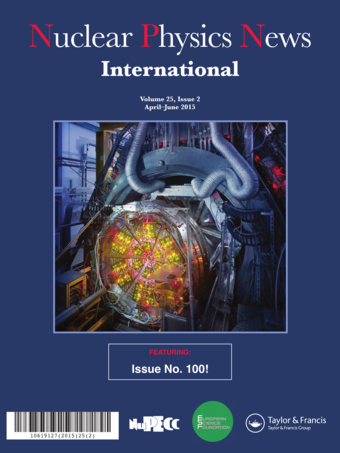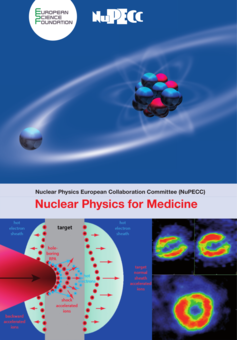100 issues of Nuclear Physics News - edited at TUM
2015-09-15 – News from the Physics Department

Nuclear Physics News (NPN) started out 25 years ago as a European publication, initiated by NuPECC, the Nuclear Physics European Collaboration Committee. It was intended as newsletter and forum for the nuclear physics community in Europe originally featuring a European editorial board. However, it quickly expanded its reach beyond Europe, becoming a global scientific magazine and serving the nuclear physics community as a whole. Today funding, editorial board and readership all extend around the world.
NPN includes laboratory portraits as well as feature articles, information about facilities and methods, editorials about important issues in nuclear physics or for the community, and reports on the impact and application of nuclear physics techniques in related fields of science. Conference and meeting reports as well as a calendar of future events are presented as well. NPN gathers up-to-date information by some of the best scientists working in nuclear physics. Gabriele-Elisabeth (Sissy) Körner from TUM’s physics department has served as editor of NPN for all issues in 25 years.
Issue 100 features HADES experiment
Current issue 100 of Nuclear Physics News features a European project that originated at TUM’s physics department: HADES, the High-Acceptance Di-Electron Spectrometer at GSI Darmstadt.
The HADES spectrometer investigates fundamental questions about the properties of matter and its very origin. It studies the properties of hadrons produced within nuclear matter. Hadrons are particles that consist of two or more quarks (elementary particles) which are bound by the strong force in a similar manner als molecules are bound by the electromagnetic force. The proton and the neutron, which make up the atomic nuclei of the matter of which we consist and that surrounds us, are the only stable hadrons (although neutrons decay, if they are not bound within a nucleus). The decays of the unstable other hadrons offer a glimpse into the early history of the universe, when temperatures and the energy density were much higher than today at the center of our sun.
Please read more on “The HADES Pion Beam Facility” (3 pages PDF) (excerpt of Nuclear Physics News, 25, 2 (2015)).

NuPECC: Nuclear Physics European Collaboration Committee
NuPECC has 30 members appointed by national funding agencies and represents 20 countries and more than 6000 scientists and engineers. It is the voice of the European nuclear physics community; its mission is to “strengthen European Collaboration in nuclear science through the promotion of nuclear physics and its trans-disciplinary use and application in collaborative ventures between research groups within Europe”. NuPECC achieves this goal by preparing “Long Range Plans” and “Roadmaps” as well as reports of special topics in basic nuclear physics and its applications, such as e.g. the latest one “Nuclear Physics for Medicine”.
All publications of NuPECC are posted on its website or are available free of charge at the office of NuPECC from its scientific secretary Dr. Gabriele-Elisabeth Körner (sissy.koerner@ph.tum.de) at Physik-Department E12.
Publication
Links
Contact
- Dr. Gabriele-Elisabeth Körner
- Technische Universität MünchenJames-Franck-Str. 185748 GarchingTel.: +49 89 289-12293FAX: +49 89 289-12298E-Mail: sissy.koerner@tum.de
- Prof. Dr. Laura Fabbietti
- Physik-Department and Exzellenzcluster UniverseTechnische Universität MünchenBoltzmannstr. 285748 GarchingE-Mail: laura.fabbietti@ph.tum.de